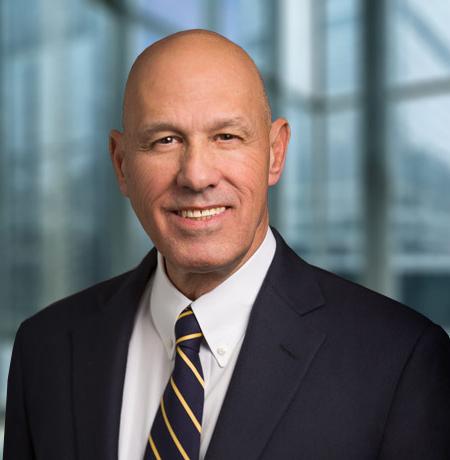This Monday, a store called Amazon Go opened in Seattle. Here’s how it works: At the door, you scan your Amazon Go app and enter through a subway-style gate. Inside are typical convenience-store items, as well as some items from Whole Foods. You put items you want directly into a shopping bag. Then you exit. Moments later, you receive an electronic receipt.
Amazon has redesigned the process of shopping by focusing on its simplest components: enter the store, take your items, and leave. It has isolated the most frustrating components—checkout and payment—and used sophisticated computer vision and machine learning to make them invisible to the consumer.
The Amazon Go store is a relatively small-scale experiment that will teach Amazon more about how retail can be reimagined. We can expect that Amazon’s lessons from this experiment will be applied on an increasingly broader scale.
A Widening Gap
Never has there been such a clear distinction between the complexities of navigating America’s healthcare system and the breathtaking simplicity of the modern consumer experience—or such a clear distinction between two approaches to achieving that simplicity.
Healthcare, for the most part, is just beginning to apply contemporary technology to the consumer experience. In large measure, that means attempting to digitize existing processes such as scheduling, registration, and payment. To date, the result has been only an incremental reduction in complexity and frustration. The healthcare consumer experience remains highly fragmented and technologically outdated. Problems that should have long ago become anachronisms—long wait times for appointments, long wait times at appointments, faxed medical records among providers, in-person encounters that could be handled virtually, billing confusion—still are the norm.
By and large, healthcare provider organizations lack the capabilities or culture for Amazon-style high-tech experiments with radical redesign. As a result, the gap between contemporary consumer experience and healthcare’s consumer experience grows wider. Also as a result, traditional healthcare organizations become more and more vulnerable to large, well-capitalized, high-tech, and highly competitive organizations wanting to carve off the most profitable pieces of healthcare for themselves.
In this environment, remaining strong and relevant requires that healthcare providers draw lessons from the core capabilities of successful companies in the Internet economy. To that end, the following four tasks should be on every provider’s to-do list for 2018.
1. Lower and Control Costs
Hospitals have had only small successes making permanent changes in their cost structure. Instead, as revenues increase, costs tend to increase, and as revenues decrease, costs tend to decrease.
Successful companies in the Internet economy take a very different approach to cost. Their point of view is that they will deliver excellence at the lowest-possible cost—no matter the level of revenue. Thus, a company like Apple maintains high margins by pricing the iPhone as a luxury item and producing it at the lowest cost possible, using a rigorous approach to materials, supply chain, and assembly.
For hospitals and health systems, getting serious about costs requires a holistic approach to the efficiency of the enterprise: divesting or repurposing services or facilities that are duplicative or low performing, reducing unwarranted clinical variation, and dramatically redesigning processes for better quality and efficiency.
2. Get the Friction Out of Your Provider Products
The Amazon Go store is only the latest example of what has made Amazon one of the most successful companies on the planet: its obsession with providing a friction-free shopping experience. That obsession is shared by other successful Internet companies. For example, in just two years ride-sharing companies’ share among ground transportation for business travelers increased almost six times, in large part because they removed the friction of hailing, directing, and paying for a cab.
Friction is rampant in healthcare—appointment scheduling, communication with and among providers, wait times, difficult wayfinding, repetitive paperwork, confusing billing, and perhaps most of all, lack of digital options for care and communication. Consumers put their heads down and tolerated the friction of the taxi experience until an alternative emerged, and then they shifted loyalty fast. It may well be that the most influential healthcare company of the Internet economy will be the one that truly simplifies the experience of care.
3. Control the Last Mile
The last mile is a critical concept in today’s economy. It means attacking the final step in connecting the consumer with a service or product, applying every resource—technology, process redesign, and imagination—to making the last mile disappear.
Amazon is closing in on $1 trillion in market value by relentlessly attacking the last mile between consumer and product. Next-day delivery, same-day delivery, drone delivery, bicycle delivery, in-home delivery, and yes, even a store without cashiers—Amazon has and will continue to throw everything it has at the last mile.
In healthcare, the last mile is the longest part of the journey. Taking off work, driving, parking, checking in, waiting—the barriers seem exhaustingly high. Healthcare is just barely beginning to apply Internet-era capabilities to make the last mile less of a chore. Mobile healthcare and telehealth, conveniently located clinics, online scheduling and information, remote monitoring—all of these are in their infancy for most hospitals and health systems.
Much of the effort to master the last mile of healthcare is taking place outside legacy organizations—by tech companies, app developers, telehealth companies, and entrepreneurs. Internet-era companies know that controlling the last mile is key to customer engagement, trust, and loyalty. Legacy healthcare organizations cannot cede this consumer connection to others and expect to thrive.
4. Digitize Engagement and Care
Today, 80 percent of U.S. adults own a smartphone, almost three quarters of adults have used an on-demand online service, and the top four companies by market capitalization all are technology companies: Apple, Alphabet/Google, Microsoft, and Amazon. The consumer expectation for a digital experience is coming to healthcare. Among millennials, the largest population segment, almost three-quarters want to book appointments with mobile apps, would prefer to see a doctor virtually, and look online for reviews before selecting a doctor.
Yet hospitals are still largely analog in a digital world. Only 14 percent offer digital tools and information to enable consumer engagement, less than one-quarter offer a range of virtual/telehealth access points, and only about two-fifths provide messaging between patients and providers. In many cases, even when these capabilities exist, they are not up to the contemporary standards set by companies like Amazon and Apple. Even more daunting—and potentially disruptive—for providers will be tapping into capabilities provided by artificial intelligence and genomics to improve diagnosis and treatment decisions.
What It Takes
Tackling this to-do list requires capabilities and characteristics that may be difficult to achieve for traditional hospitals and health systems. Some organizations have come to a conclusion that accomplishing these tasks will require a greater amount of financial and intellectual capital than even the largest provider organizations currently have. Financial strength is needed for greater strategic flexibility to experiment and innovate; greater scale will help attract top talent and innovative partners.
Even tougher will be the major shift in culture that will be required. Many healthcare organizations have had clear and long-term success with their traditional business models. Recognizing the need for fundamental change and a significant pivot in strategy will be a big leap.
Healthcare’s historically risk-averse, inpatient-focused, and slow-to-change culture will need to be reoriented for a fast-changing, highly competitive, high-tech environment. The leadership fortitude and perseverance that will be necessary to accomplish this reorientation may be the toughest item of all on the to-do list for the future.
This piece stems in part from a conversation between Kenneth Kaufman and Michael W. Peregrine as part of an ongoing thought leadership series titled Surviving Disruption: A Roadmap for Health Care Governance.

